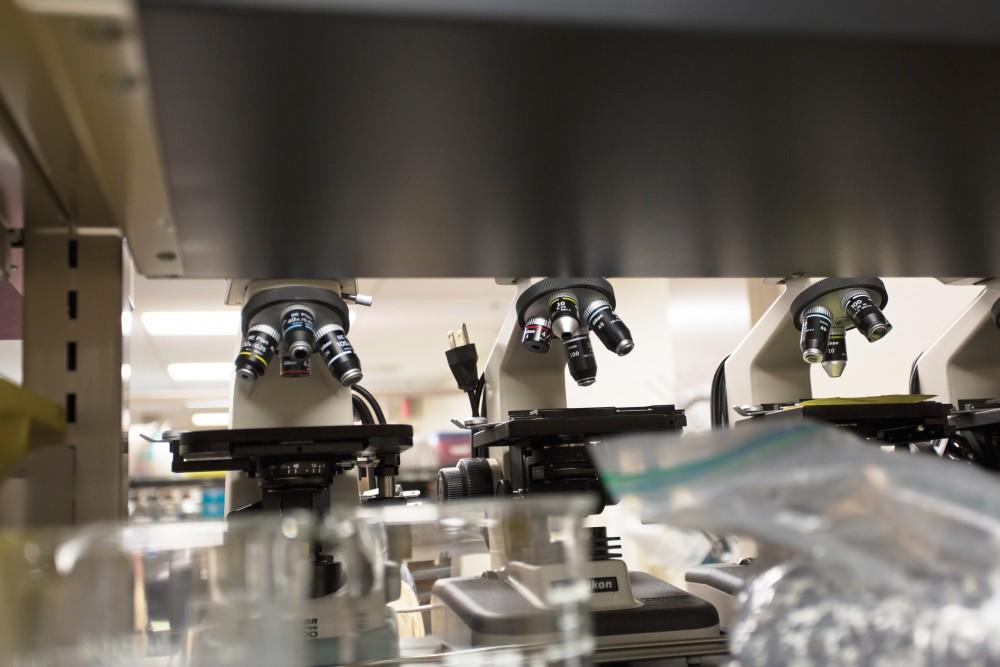GVSU awarded grant for high-tech innovation

GVL / Kevin Sielaff Grand Valley celebrates the P. Douglas Kindschi Hall of Science with a dedication ceremony Friday, August 28th, 2015. The dedication recognized both Grand Valley and state officials that made the realization of this building possible.
Jan 18, 2018
In downtown Grand Rapids, anchored by the Van Andel Research Institute, is the Grand Rapids SmartZone. Created in 2001, it has been a pillar of technological innovation and research in West Michigan, empowering businesses and researchers to grow and make advancements in their fields. The SmartZone Local Development Finance Authority (LDFA) has recently given Grand Valley State University a chance to experience that same technological growth, awarding them over $1 million for several initiatives and projects.
The applied Medical Device Institute (aMDI), which is a part of the Cook-DeVos Center for Health Sciences in Grand Rapids, received $680,000 to advance the program. The institute works on developing medical devices and advancing medical technology.
LDFA also awarded a $700,000 grant to a collaboration project between the Padnos College of Engineering and Computing, Spectrum Health Innovations, and the Kendall College of Art and Design. The grant will be awarded over three years.
Additionally, LDFA also gave money to Future State, a community and development project that GVSU partners with. Linda Chamberlain, Meijer endowed chair of entrepreneurship and innovation in the Frederik Meijer Honors College, discussed the importance of these financial awards.
“The donors are primarily focused on student jobs and engaging students in their work,” said Chamberlain, who is involved with the development of Future State. “There’s a lot of research to be done. We’re going to prototype the model (of Future State) around workforce development skills and employability skills. It’s very clear to our regional employers that they can’t find people to employ fast enough and that there’s a gap in employability.”
In addition to GVSU, Future State is closely partnered with the organization Talent 2025 and Fred Keller, whose namesake is lent to GVSU’s engineering laboratories on the Pew Campus.
“I’ve been in this position a couple of years, and I frequently find other people who are interested in finding creative solutions that impact the vitality of our community,” Chamberlain said. “I have a co-conspirator in that, if you will. Frank Keller is someone who has a long history of addressing social justice issues in our community. So we created the proposal (to LDFA) that was awarded to try a problem-solving technique that we would love to see institutionalized in our community.”
Chamberlain also discussed Talent 2025 and what its role will be in the project.
“Talent 2025 is an organization that has hundreds of CEOs of the region addressing key issues that affect the economic vitality of the region,” she said. “To me, what they bring to the project in a very clear way is the lens of employers. For this particular challenge—really any community challenge—we need employers at the table.”
As these various projects begin to take shape thanks to LDFA’s awards, those running these initiatives will be looking ahead to the future and wondering how they can grow from here.
“I’m very excited to engage with the community and try to develop innovative solutions that will serve our region well,” Chamberlain said. “Even more so, I’m excited about the possibility of change. It’s about taking those solutions, implementing them and driving positive change in our communities.”

























